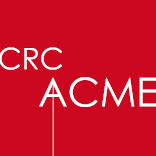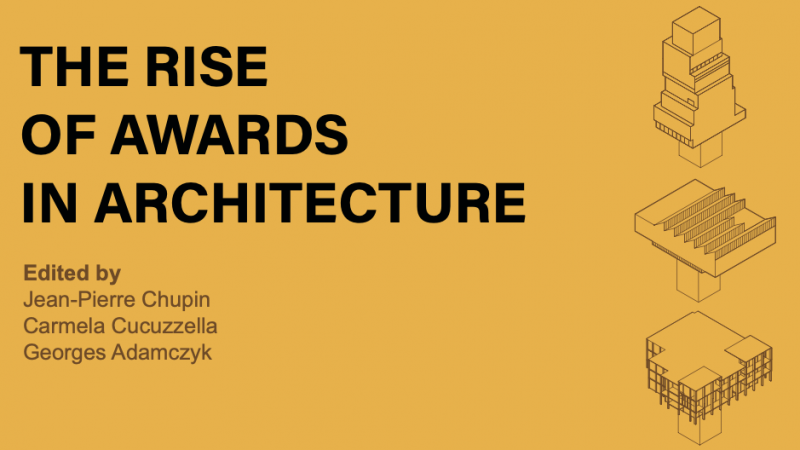Led by Dr. Jean-Pierre Chupin, Canada Research Chair from the Université de Montréal, the ACME Chair’s research contributes to the improvement of the quality of built environments. Research projects, ideas competitions, critical exhibitions and databases each support the capacity of buildings and public spaces to be evaluated and discussed in terms of equity, social value and sustainability. These issues, related to a comprehensive and inclusive view of quality in design, are addressed through design awards and competitions held in Canada over the past 20 years.
NEWS
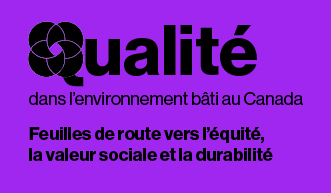
EVENTS
Toronto 2025 Convention Program : Toward a White Paper on Quality...
The final program for the 2025 Annual Convention is now available. From April 30 to May 2 in Toronto, the event will bring together experts, researchers, and practitioners to advance a national strategy for quality in Canada’s built environment. We are happy to share with you this program and hope you are as excited as we are for those great speakers, roundtables discussions and site visits that will take place during the convention.
Jean-Pierre Chupin, PhD, Professor, Architect MOAQ, MIRAC. Holder of the Canada Research Chair in Architecture, Competitions and Mediations of Excellence at Université de Montréal and Principal Investigator of the SSHRC Research Partnership on Quality in Canada’s Built Environment.
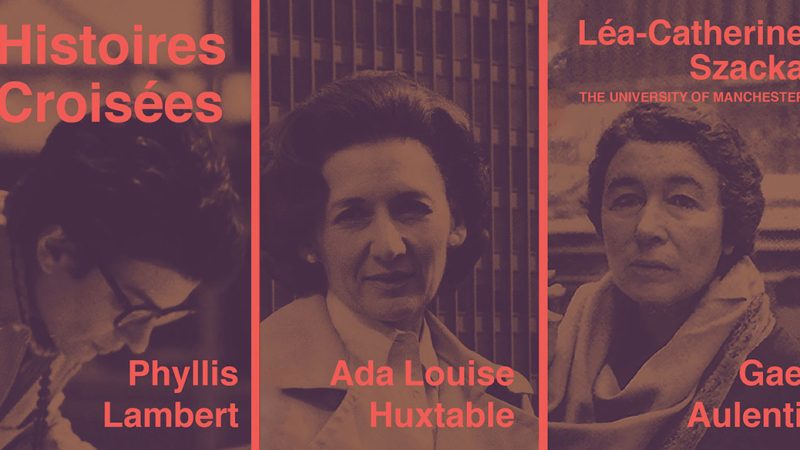
EVENTS
Conference by Léa-Catherine Szacka , University of Manchester
Date: Tuesday, April 1st at 5:30 pm.
Location: Amphitheatre 1120, Faculté de l’aménagement, Université de Montréal
Lecture series of the Laboratoire d’étude de l’architecture potentielle
Crossed Histories
Phyllis Lambert, Ada Louise Huxtable and Gae Aulenti on architecture and the city
Summary:
Born in the 1920s, architects Gae Aulenti and Phyllis Lambert and critic Ada Louise Huxtable were among the most influential figures in post-war architecture and design. Pioneers in a largely male-dominated field at the time, and key players in the transition from modernism to postmodernism, they set out to conquer and shape public space. This talk retraces the history and careers of these three women, who are the focus of the exhibition Crossed Histories, presented until May 2025 at the Canadian Cultural Centre in Paris.
Léa-Catherine Szacka:
Senior Lecturer (Associate Professor) in Architectural Studies, University of Manchester
Director of the Manchester Architecture Research Group (MARG)
Vice-President, European Architectural History Network (EAHN)
Co-Founder, PASZA - Platform for Architectural Research
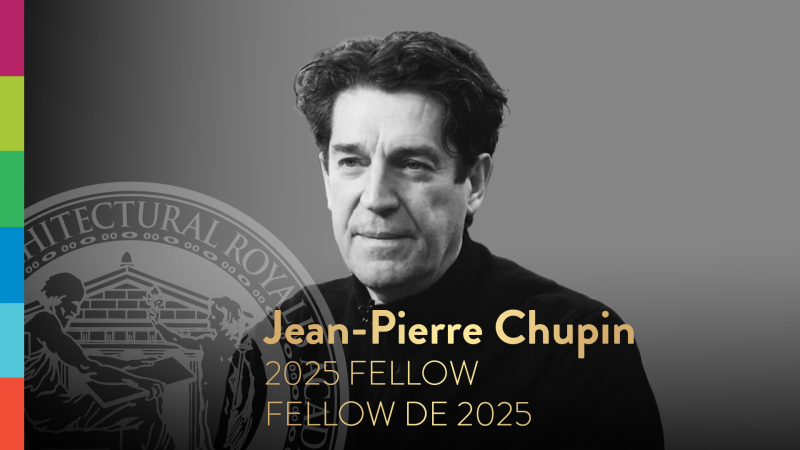
PEOPLE
Professor Chupin was nominated by Thierry Montpetit, FRAIC, and letters of support were submitted by five renowned Quebec architects: Anik Shooner, FIRAC, Nathalie Dion, FIRAC, Gilles Prud'homme, FIRAC, Maxime Frappier, FIRAC, and Renée Daoust, FIRAC, in the category of : Outstanding scholarly contributions supported by research, publications or teaching in the field of architecture, and, Outstanding contributions to the profession fostering excellence in architectural practice through leadership in public service or industry organizations.
Fellows will be formally inducted into the RAIC College on Tuesday, June 3, 2025 at an induction ceremony held in conjunction with the RAIC Conference on Architecture in Montreal, Quebec.
Visit the RAIC website to see the 43 new Fellows 2025.

EVENTS
“From business districts almost exclusively reserved for commercial and professional activities, Canadian downtowns are increasingly becoming living spaces. Yet there are few elementary schools, which are essential to inclusive urban development. And for good reason: the traditional model of the single-purpose, low-rise school building, with a large playground at ground level, is at odds with a high-density, high-value environment. The heart of metropolises attracts developers, all the more so as urban planning regulations allow them to erect high-rise buildings, a source of significant revenue. So what kind of school architecture can we imagine for our city centers? And what might it offer schoolchildren?”
- A. Cormier, A. Paré and G. Adamczyk, En centre-ville : une architecture à hauteur d'enfant, Potential Architecture Books, Montreal, 2024
The Laboratoire d'étude de l'architecture potentielle (LEAP) recognizes the importance of the stakes involved in building schools downtown, and held a round table on this theme to mark the launch of the book En centre-ville : une architecture à hauteur d'enfant.
Moderator
Jean-Pierre Chupin, Architect and Professor at the School of Architecture, Université de Montréal, Chair Holder of the Canada Research Chair in Architecture, Competitions and Mediations of Excellence and Director of the LEAP
Panelists
Robert Beaudry, Montréal city councillor, Member of the Executive Committee, Responsible for OCPM urban planning and homelessness
Carol Bélanger, Chief Architect, City of Edmonton
Anne Cormier, Architect, Professor at the School of Architecture, Université de Montréal, Researcher at the LEAP
Ève Desrosiers, Architect, Héloïse Thibodeau architecte
Maryse Laberge, Architect, nfoe
Claude Laurin, Architect, Real Estate Planning and Development Coordinator, Centre de services scolaires de Montréal
Jordan Owen, Junior Developer, Mondev
The round table is supported by the Social Sciences and Humanities Research Council of Canada (SSHRC), the Vice-rectorat à la recherche, à la découverte, à la création et à l'innovation de l'Université de Montréal (VRRCDI) and the Laboratoire d'étude de l'architecture potentielle (LEAP).[vc_video link="https://vimeo.com/1011071339/907b73b83c" css=""]
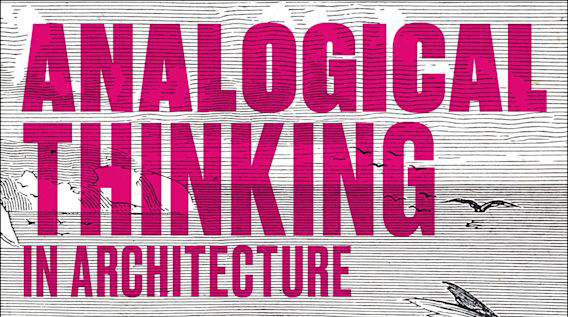
PUBLICATIONS
This book provides an in-depth exploration of the rich and persistent use of analogical thinking in the built environment. Comparing views on the role of analogies and metaphors by prominent voices in architecture and related disciplines from the 17th century to the present, the book shows how the “analogical world of the project” is revealed as a wide-open field of creative and cognitive interactions.

PEOPLE
The City of Montreal has selected the Canada Research Chair in Architecture for research into the lived experience of quality by users of public buildings.
Jean-Pierre Chupin, Bechara Helal and Carmela Cucuzzella will develop a protocol for collecting lived experiences with doctoral students: Firdous Nizar, Paloma Castonguay-Rufino, Yolene Handabaka, Shantanu Biswas Linkon, Cyrille Tchango Ngamaleu of the Individualized PhD in Architecture program.
The proposal from the Canada Research Chair in Architecture, Competitions and Mediations of Excellence (CRC-ACME) team was selected in Stream 1 of the call "Developing a Stronger Design Culture Together - Edition 2" (Call for Proposals 2023-2024).
Project: Protocol for study and qualitative assessment of the social value of public buildings through documentation of users’ lived experiences
Description: A protocol for post-occupancy quality assessment, describing methods for gathering and studying accounts of lived experiences in municipal spaces and buildings, and for compilation of a set of remarkable lived-experience stories and records. The goal is to better understand the factors that influence the quality of lived experiences in those spaces and buildings.
This project will enrich the strategies and actions for Sustaining Quality outlined in the Design Montréal Quality Toolkit (Quality Operation section).
It will also contribute to achievement of the results targeted by the Montréal 2030 Strategic Plan, notably as concerns the following priority:
Priority 19 – Provide all Montrealers with safe, quality living environments and a local response to their needs
More information on CRC-ACME: https://crc.umontreal.ca
More information on the Design Montréal program: https://designmontreal.com/en/calls/developing-a-stronger-design-culture-together-2nd-edition?section=3948

PUBLICATIONS
On the occasion of accessibility week at the Senate, La Presse echoes the research coordinated by researchers from the Université de Montréal who are members of LEAP and the SSHRC partnership on quality.
Click here to read the article.
SCIENCE BLOG
ARCHITECTURAL COMPETITIONS, PROMOTION OF EXCELLENCE AND CRITICISM OF OUR INSTITUTIONS: THE ROLE OF THE RAIC THROUGHOUT HISTORY
October 21 2024 / Samuel Dubois (Doctorant)
IN THE ARCHIVES OF JACQUES FOLCH-RIBAS, QUEBEC ARCHITECT WINNER OF NUMEROUS LITERARY PRIZES
December 12 2023 / Lucie Palombi (Doctorante)
ABOLISHING AWARD CATEGORIES GUARANTES NEITHER FAIRNESS NOR OPENNESS
September 27 2023 / Annie Thao Vy Nguyen (Étudiante) + Jean-Pierre Chupin, Ph.D.
